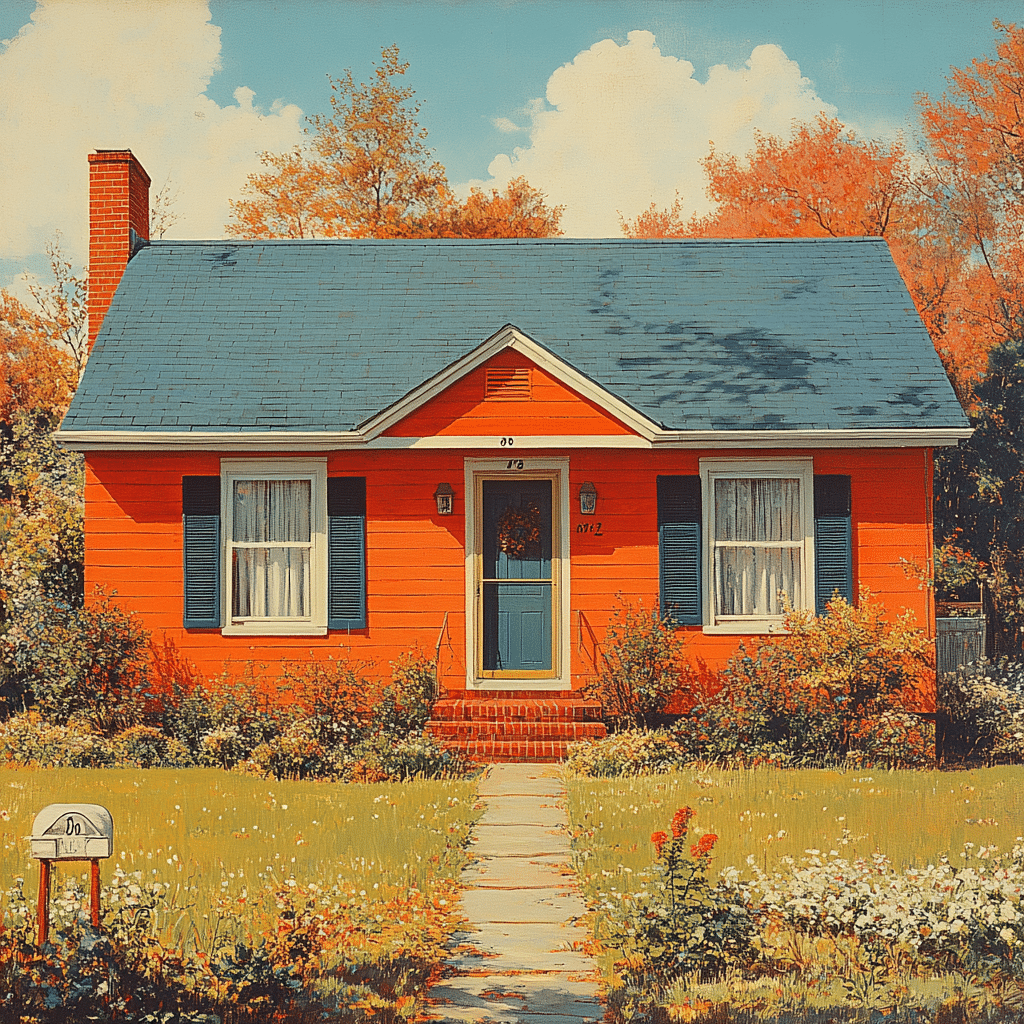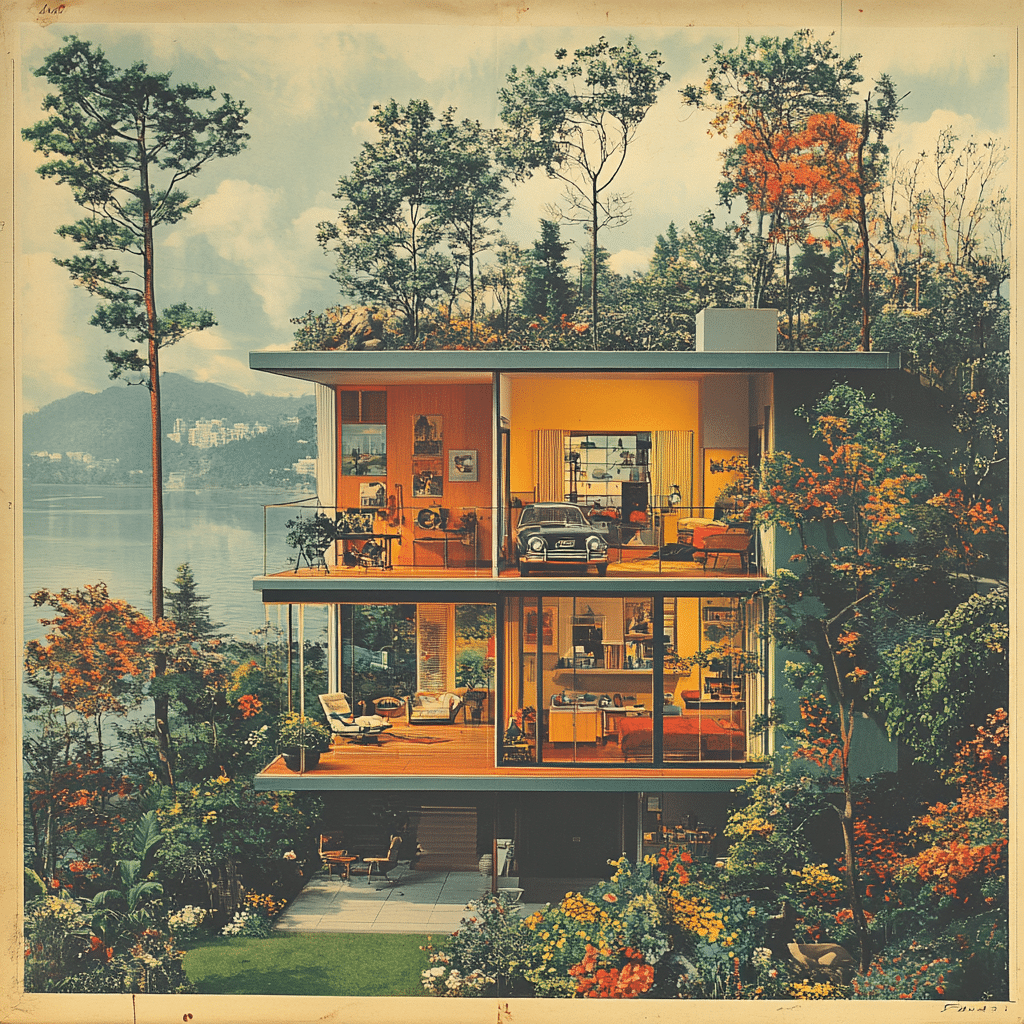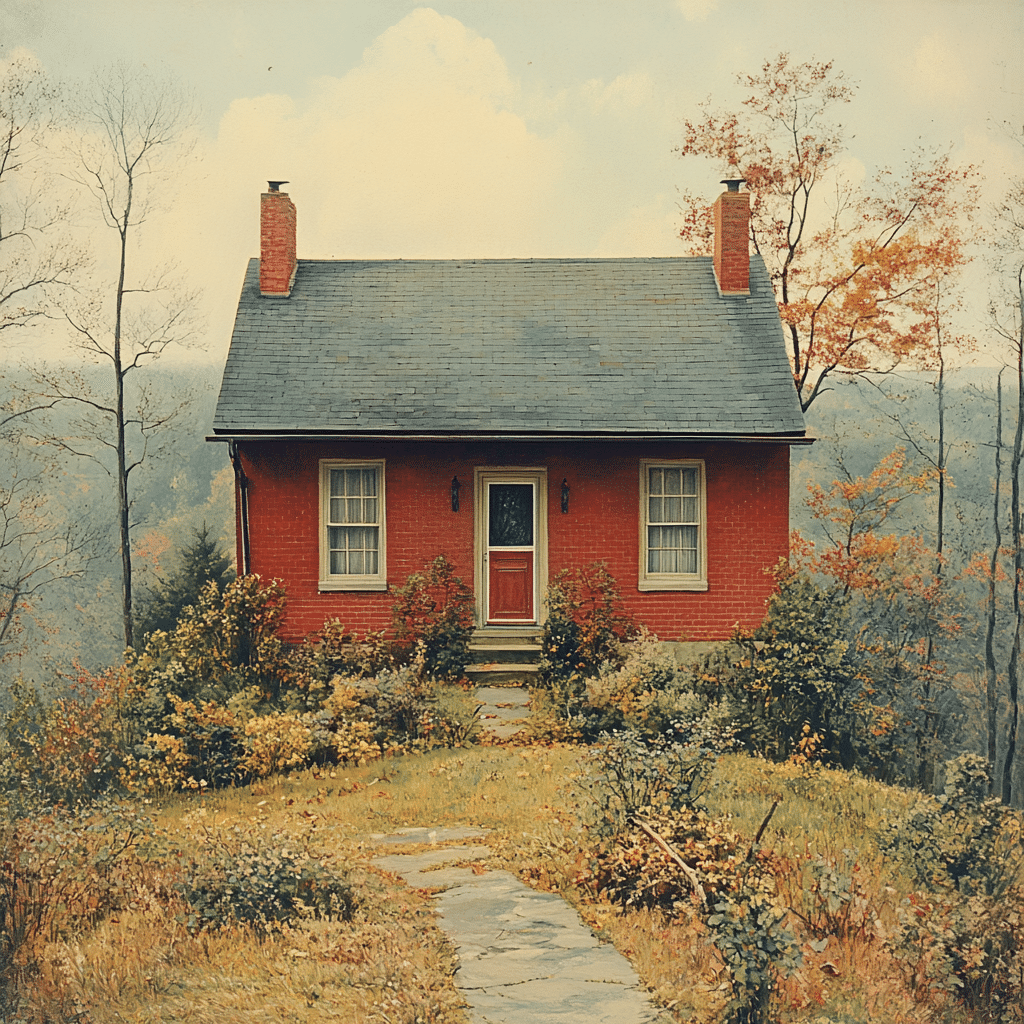Reflecting on the 1955 cost of a new house unveils a treasure trove of insights about America’s housing landscape. With an average price of just $10,950, this figure may seem jaw-dropping when stacked against today’s inflated housing market. Converting that original price to present-day dollars gives us about $114,000 after adjusting for inflation, yet even this figure showcases how property prices have surged over decades, leaving many prospective homeowners in a bind.
As we traverse the housing landscape of 1955, we can glean valuable lessons applicable to today’s home-buying journey. So, buckle in, and let’s dive into some enlightening facts about the 1955 cost of a new house and how it shapes our understanding of homeownership today.

Top 6 Shocking Facts About the 1955 Cost of a New House
1. The Price Tag: How Much Was a New House in 1955?
The average cost of a new house in 1955 stood at approximately $10,950. Wow, that’s cheap by today’s standards, right? In comparison, homes in urban centers can easily fetch several hundreds of thousands of dollars. The stark contrast highlights not just an increase in house prices but also the evolving expectations for what constitutes a home.
2. Average Square Footage of New Houses in 1955
During this era, homes averaged about 1,200 square feet. To put that in context, modern homes typically boast around 2,500 square feet. The shift towards larger living spaces signals a change in lifestyle needs over time. Today, homebuyers seek open-floor plans and expansive backyards, reflecting a longing for connection within family spaces.
3. Mortgage Rates and Their Impact on Purchasing Power
The average mortgage rate in 1955 hovered around 4.25%. This one’s a real eye-opener! With such a low rate, a new homeowner could swing a mortgage payment of around $60 per month for an average-priced house. Fast forward to today, and you’ll find that mortgage rates can be significantly higher, with monthly payments that can strain budgets. It’s clear: those low rates unlocked doors for many families back then.
4. Standard Features in 1955 Homes vs. 2024 Expectations
In 1955, homes were fairly basic—think single-pane windows and small kitchens. Moving to 2024, we place high demands on our homes, looking for lavish features like smart home technology and energy-efficient appliances. The journey from functionality to lifestyle enhancements is palpable. This raises two questions: What do you need in a home today, and how much are you willing to invest to get it?
5. Cultural Influences on Housing Design in 1955
Returning to 1955 reveals the architectural influence of post-war optimism and suburban growth. Designs like the Ranch and Minimal Traditional were all the rage, with builders like Levitt & Sons making waves in affordable housing development. This era marked a significant shift towards creating mass-produced neighborhoods, catering to the needs of burgeoning families. The aesthetic choices from this time echo in modern suburban designs, as we attempt to capture that same spirit.
6. Economic Factors Driving Housing Prices and Design
The economic boom post-World War II laid the foundation for the housing market of 1955. Access to credit improved, with government incentives like the G.I. Bill helping many veterans transition to homeownership. Yet, while this turned housing into an attainable goal for average Americans, it also birthed a culture of consumption that we can see trending in today’s competitive market.

Understanding the Lasting Legacy of 1955 Home Prices
The pricing and design trends from 1955 have left a significant imprint on housing development. For one, the acceptance of suburban living paved the way for the community-centered neighborhoods we cherish today. This era also showcased that homeownership could be within reach, a notion that continues to fuel the American dream.
Yet, as we examine property pricing trends, we find ourselves in a tug-of-war between affordability and desirability. While homes in the mid-20th century were generally accessible, today’s mounting prices often feel like an insurmountable hurdle for many. Thus, understanding the 1955 cost of a new house becomes crucial in discussions about future trends in homeownership.
Reflections on Housing Affordability and Trends
Comparing the 1955 cost of a new house to today’s prices serves as an eye-opener regarding economic cycles and shifts in values. Urban centers nowadays present a hefty challenge for first-time buyers, raising a clarion call for a re-evaluation of what homeownership means.
The challenges presented by current housing prices harken back to the simplicity of living in 1955. As we reflect, the journey to homeownership continues to evolve. The emphasis should remain on understanding both history and contemporary modalities so potential homeowners can navigate the terrain effectively.
Ultimately, whether it’s considering a stick built home or wondering What Is homestead tax exemption, staying informed about the past equips us all to approach today’s mortgage landscape with wisdom and clarity. Utilizing resources like Mortgage Rater can aid in securing that coveted Preapproval For mortgage, helping to pave the way toward your future homeownership dreams.
It’s about learning from the past while positioning ourselves for a successful, fulfilling journey in today’s ambitious market. So strap on your boots and get ready to explore the wide world of homeownership—with the lessons of yesterday lighting the path for tomorrow!
1955 Cost of a New House: Shocking Facts and Figures
What’s Cooking in Home Prices?
Back in 1955, the average cost of a new house was a mere $10,950. Can you believe it? This price tag seems almost unthinkable today. For some perspective, that amount breaks down to about $1.04 per square foot! If you’re curious about how modern prices stack up, check out the current price per sq ft median house in USA to see just how far we’ve come. Folks back then were not just buying houses; they were stepping into a whole new lifestyle, complete with shiny kitchen appliances and cozy front porches.
Interestingly, many families faced significant financial hurdles just to snag their dream home. The 1950s saw a rise in homeownership, yet many were Refinancing The house to make it a reality. They poured their hearts into making their houses a home, which often included picking the perfect wallpaper and maybe even putting in a little garden. And while the costs were relatively low, they still had to juggle paying for other essentials—a challenge that most face, even today!
Taxes and Tactics
Now, let’s get into something a bit more surprising: property taxes. Did you know that while some states had heavier taxes, others enjoyed lighter levies? You might be surprised to find out where is lowest property tax in USA if you dig around in the stats from back then versus now. Homeowners were often looking for bargain-basement prices not just on their homes but on the taxes they paid, too. It was a balancing act: buying a house without breaking the bank while also gathering the right resources.
And here’s a quirky bit of ‘55 trivia for you: during this time, the “Walking Across America” program started to gain traction, encouraging families to explore their neighborhoods more on foot. This not only built community spirit but also provided a fun way to check out potential homes on the market. Just imagine, a stroll through the neighborhood might lead you to your soon-to-be dream home, all while enjoying the sights and sounds of everyday life.
A Glance at the Future
Looking at the numbers back then, it’s easy to see that the 1955 cost of a new house laid the groundwork for many of the housing trends we see today. From Form 4562 instructions related to depreciation to the sheer joy of homeownership, these past figures remind us of how far we’ve come and also how vital it is to understand current housing market dynamics. So next time you hear the price of today’s houses, just remember—back in ‘55, you could buy a whole house for what some pay in rent!




